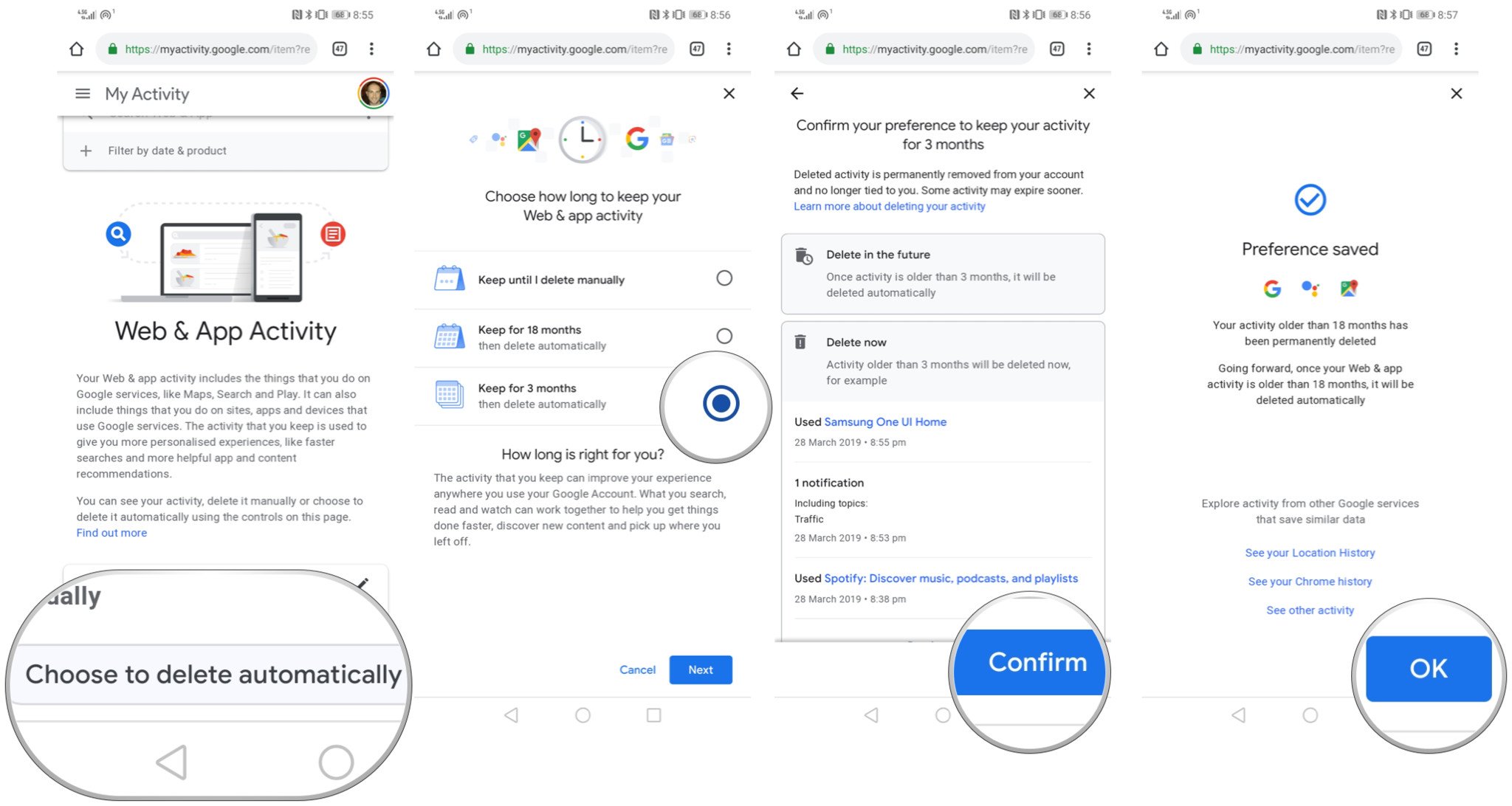- Get link
- X
- Other Apps
- Get link
- X
- Other Apps
Back in May, Google, as part of a commitment to give its millions of users more control over their privacy and data retention, said it would soon allow certain sets of data to be deleted automatically after a certain period.
That feature is now live, and it's available for Web & App Activity, along with Location data. Here's what you need to know about the service, and how to set the data to be deleted automatically.
What is Web & App Activity?
A short snippet of my Web & App Activity in a 12-minute period.
Basically, anything you do when you're logged into your Google account gets tracked, be it on the web or on your phone. Google puts this information into a timeline on its My Activity page, where you can see pretty much everything you've done in a Chrome browser, on Google Maps, or Google Play.
If you're not familiar with Google's My Activity page, brace yourself — it's quite scary seeing just how much of your life Google is tracking. If you have an Android phone, it takes things to an even greater extreme, by logging every app you open, too.
Google says that Web & App Activity is tracked in order "to give you more personalised experiences, like faster searches and more helpful app and content recommendations." In other words, because it knows things about the apps you use, the products you search for, and the things you buy, it can offer more relevant ads and populate the Google Feed with better content.
What is Location History?
A short snippet of a day at Google I/O 2018, based in Mountain View, California.
Location History is separate from the Web & App Activity because while that logs when you use Maps, and even what you search for in that app, Location History uses your phone's location, along with the IP address on your Google-logged-in computers and tablets, to create a granular history of your location in a timeline for you to follow.
Again, seeing the timeline is quite bracing, especially if you've never deleted any portion of the history. It collates location with photos you may have taken and stored in Google Photos, and while it's quite interesting to see those associations, you may want to get rid of that history if you don't plan on getting nostalgic on the regular.
Google's new tools
You've always been able to delete your Web & App Activity, along with your Location History, en masse, but Google's now providing the option of doing the dirty work for you on a regular cadence — every three months or 18 months, depending on your preference.
Here's how to do it for both Web & App Activity and Location History.
How to automatically delete Web & App Activity
- Go to the My Activity portal on your phone or desktop.
- Under the Web & App Activity banner, select Choose how long to keep.
- Select the length of time you'd like Google to keep your new data — 3 months or 18 months.
- Ensure you're happy with your choice and press Confirm.
- *Note that by selecting 3 months or 18 months, any Web & App Activity stored longer than that will be deleted.
How to automatically delete Location History
- Open up Google Maps on your phone.
- Tap Menu in the left-side hamburger menu (three lines).
- Choose Your timeline.
- Tap the three-dot More button.
- Tap Settings and privacy.
- Tap on Location settings.
- Tap Automatically delete Location History.
- Select the length of time you'd like Google to keep your new data — 3 months or 18 months.
- Ensure you're happy with your choice and press Confirm.
- *Note that by selecting 3 months or 18 months, any Location History stored longer than that will be deleted.
What now?
Google's heard the chorus of people demanding better and more robust controls for their data, which the company collects in enormous volumes. Being able to ensure that it can be used to enhance the Google experience in the near-term while also being purged on a regular basis is likely to go a long way to making Google's customers happier.
How to clear search and location history in Google Maps on Android
by Daniel Bader
- Get link
- X
- Other Apps



